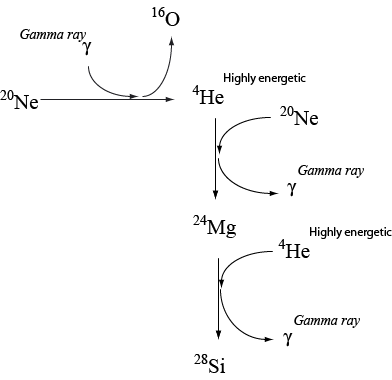

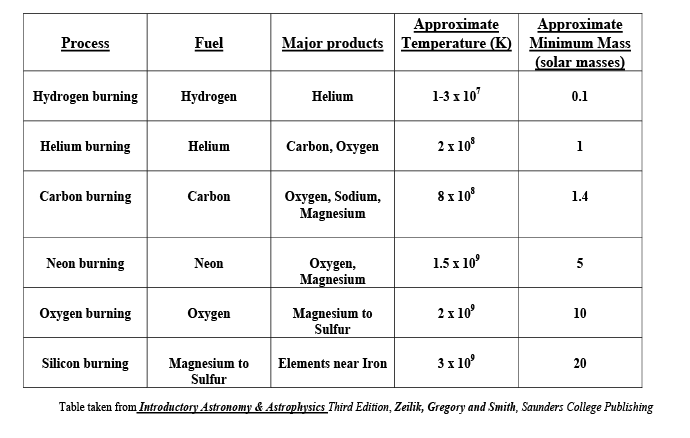
PP I is the main process, in the Sun it is about 85%, PP II contributes to about 15% and PP III to about 0.02% of the proton-proton chain processes.
The processes are shown below:
In the presence of heavier elements generated in previous stars , particularly carbon and nitrogen, a catalytic sequence can occur known as the CNO cycle. However, because the coulombic energy barriers are much higher (about 6 or 7) than for the PP chain it requires a higher temperature to significantly get going (about 1.5 x 107K). Above about 1.8 x 107 K the CNO cycle can predominate if there is sufficient carbon and/or nitrogen. In the Sun it accounts for about 15% of the energy conversion (coulombic forces are charge-charge interactions, in this case the energy barrier is from the repulsive proton-proton force).
The CNO cycle is shown below. Notice that one carbon and four hydrogen nuclei go in and one carbon and one helium comes out, the carbon can then re-cycle, hence the catalytic nature of this process.
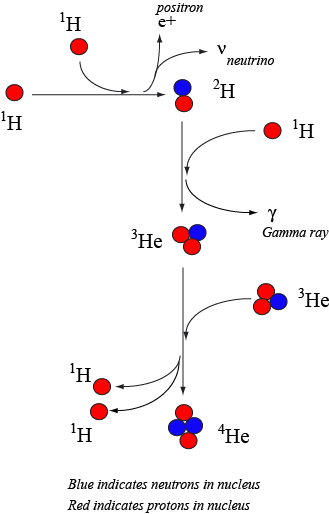
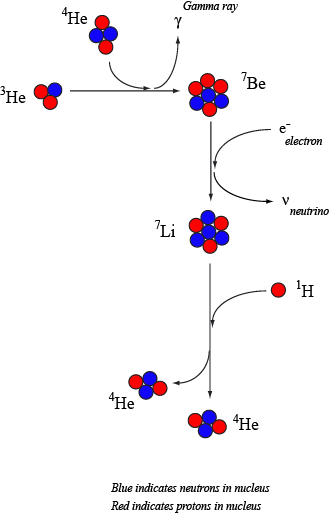

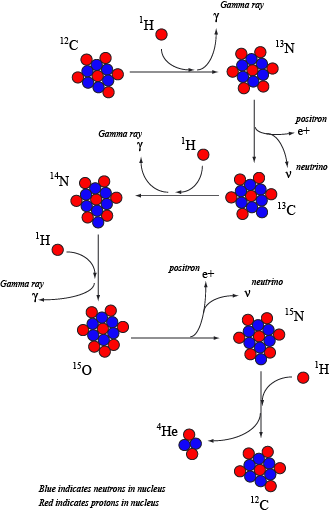

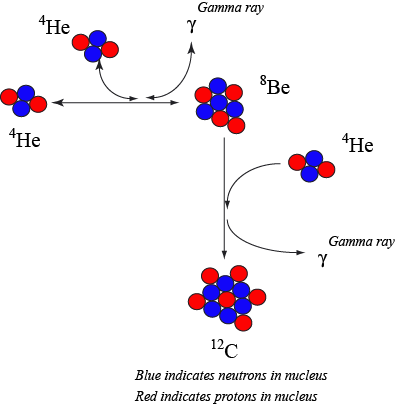
12C + 4He converted to 16O + Gamma ray
16O + 4He converted to 20Ne + Gamma ray
20Ne + 4He converted to 24Mg + Gamma ray
This generates a core consisting of C,O and Ne.
In higher mass stars when the temperatures reach 5-8 x 108 K carbon burning can take place
Through a combination of the above processes a large star can synthesise the elements up to iron. Beyond this requires the force of a supernova explosion. These stars will have started off with more than 8 solar masses when they were first formed.
At various points in the history of a star, material can get dredged up from deeper layers an brought to the surface. For example, this has happened in stars known as carbon rich stars where significantly raised levels of carbon can be seen spectroscopically in the outer layers. In this case it happens to stars greater than about two solar masses during the AGB phase.
In stars less than 4 solar mass units (mass at formation) they never reach temperatures and pressures high enough to proceed beyond helium burning. Eventually these stars burn out their cores and now have a helium burning shell surrounded by a hydrogen burning shell. At this point the star is moving into the second red giant phase on the Asymptotic Giant Branch (AGB) phase. The outer layers are shed in high winds and eventually what is left is the bright central star in a planetary nebula.
Stars larger than this undergo further contraction of the core after He and C depletion and the temperature rises further. When temperatures greater than 109 K are reached the alpha process can occur. The first step is the endothermic reaction of neon with a gamma photon to create 16O and a very highly energetic 4He. This particle has enough energy to break the coulombic barrier of neon nuclei and a series of other combinations is then possible as shown. The subsequent reactions after the initial reaction are exothermic.
